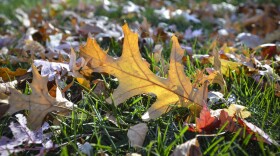-
The attitudes of UP residents toward wolves are split, says a new study, with more than 60% of those surveyed favoring reducing the wolf population, motivated mostly by worries over risks to livestock, deer and human safety.
-
Holtec Internation had been saying it planned to resume generating power by the end of 2025. That timeline has now shifted to the start of the new year.
-
Some tree farms in the central U.S. are selling more potted Christmas trees as people seek out an eco-friendly option or look to get more than one use out of their evergreens.
-
The U.S. Geological Survey has begun large-scale low-level airplane flights over the UP and northern Wisconsin to obtain high-resolution data on subsurface mineral structures and bedrock composition.
-
Public comments are due by the end of the week after the U.S. Army Corps of Engineers proposed a tunnel alternative last month.
-
Line 5 transports up to 22.68 million gallons of crude oil and natural gas liquids through the Straits of Mackinac each day, with one University of Michigan researcher pointing to the region as the worst place for a Great Lakes Oil Spill.
-
Big Rapids is one of five inaugural Bird Cities in Michigan.
-
The Dam Risk Reduction Grant Program recently announced its last allocations for projects for 19 dams statewide.
-
Scientists say leaving autumn leaves on the ground can add important nutrients to the soil and create needed habitat for insects.
-
Some environmental agencies and organizations are concerned that carbon capture and storage legislation passed recently by the state Senate will harm Michigan’s environment.
Play Live Radio
Next Up:
0:00
0:00
Available On Air Stations








![The Cheboygan River Dam's sea lamprey trap can hold up to a thousand lamprey. When sea lamprey are returning to the river to spawn in the spring, the trap needs to be emptied multiple times a day. The blue crane [on the far left] by the dam is used to lift the trap out of the water.](https://npr.brightspotcdn.com/dims4/default/4717d54/2147483647/strip/true/crop/3474x1936+0+249/resize/280x156!/quality/90/?url=http%3A%2F%2Fnpr-brightspot.s3.amazonaws.com%2F39%2F3c%2F81307d274e889e4b036955cbea28%2Fimg-1299.jpg)

